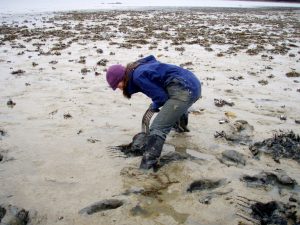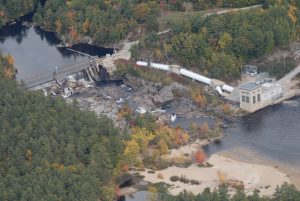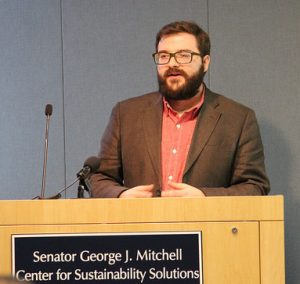Stories Hatched from the NEST
Formally concluded, work under the New England Sustainability Consortium’s Safe Beaches and Shellfish project continues to build on its success
By David Sims
The New England Sustainability Consortium’s (NEST) Safe Beaches and Shellfish project, which began in September 2013 under National Science Foundation’s (NSF) the Experimental Program to Stimulate Competitive Research (EPSCoR) program, is now winding down.
But a variety of associated projects born out of the effort are currently underway and promise to add to the rich dataset and multimedia components already generated by the project, and which will lead to new solutions and efforts to link knowledge with action and/or science with decision making.
For example, the NEST Storytelling Website—created as a master’s research project by Tyler Quiring of the UMaine Department of Communication and Journalism and the Mitchell Center—will have additional transmedia elements that tell the multilayered stories of coastal Maine clam diggers—stories that do not often leave the mudflats where they are commonly told.

It should be noted that this is not just another website. Rather, it is an intentional effort to tell sustainability stories and produce media research in ways that also build collaborations across the project team and with stakeholders.
Additionally, student-produced stories and analyses that grew out of an environmental communication service-learning class taught in the fall 2015 semester by NEST researcher and assistant professor of environmental communication Bridie McGreavy—also of Department of Communication and Journalism and the Mitchell Center—will soon be up and running as an expansion of the Storytelling Website and part of the NEST Future of Dams project, which is just gearing up.
Quiring is joining that project as a new doctoral student this summer and remarks, “This is going to be a subset of the NEST website, and the goal is to share this with people and communities that are making decisions around dams to help them explore the role communication played in the Penobscot River Restoration Project.”

Quiring’s “integrated transmedia” approach to how he crafted and will continue to craft the NEST websites is a multifaceted method of pulling different media pieces together and using them to add up to more than the sum of their parts for purposes of storytelling.
“Each one can stand alone and work independently or, taken together, can create an experience that is dynamic and and open to visitor interaction,” Quiring says. He adds, “I wanted to make stories about the interactions between and among NEST stakeholders and researchers and then use the site as another way to have engagements between all those groups and the public.”
From Quiring’s perspective, if done right, transmedia storymaking doesn’t just tell stories or disseminate information but builds knowledge. For example, he feels he was building knowledge alongside the people he was researching with for the project—from NEST stakeholders to shellfish harvesters, and beach managers. “And through sharing the story online we’re providing a space where the public can build knowledge about NEST, too, by interacting with the site.”
The ClamCam project, which grew out of McGreavy’s extensive field research interviewing clam diggers in the Frenchman Bay region, will document the rigors of a job that takes an immense physical toll on the diggers and can shift radically from day to day depending on weather, tidal cycles, polluted coastal waters (mudflat closures), and the like.
Fieldwork this summer by both Quiring and McGreavy will expand on initial efforts to document the work of clam diggers by outfitting them with body-mounted GoPro cameras to create video and audio records of the process. The ClamCam footage, which will be done in parallel with continued in-depth interviews, will help the researchers get a better sense of the whole clam digging culture and the relationship between the diggers, the mudflats and the ecosystem as a whole.

Notes McGreavy, “The field research has given us a fine-grain understanding of some of the physical practices of harvesting and how those perhaps make the diggers more vulnerable to injury. We want to get a better handle on that this summer so we can better understand the relationship between physical injury and coping mechanisms.”
You can explore the NEST Storytelling Website here by choosing from a variety of tabs at the top of the page (“Introduction, Beaches, Shellfish…”) and viewing the multiple, nested videos about the topics and people who make up the story.
Check back to these pages in the weeks ahead for the full stories on the ClamCam project and the service-learning class that led to the Future of Dams student projects.
